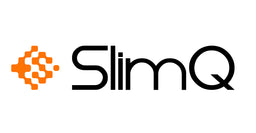Experience the Difference: 330W GaN Charger vs. Traditional "Brick"
Postato da KUANG LIANG
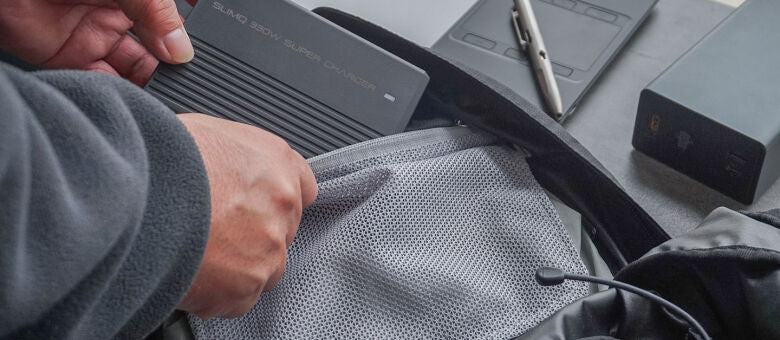
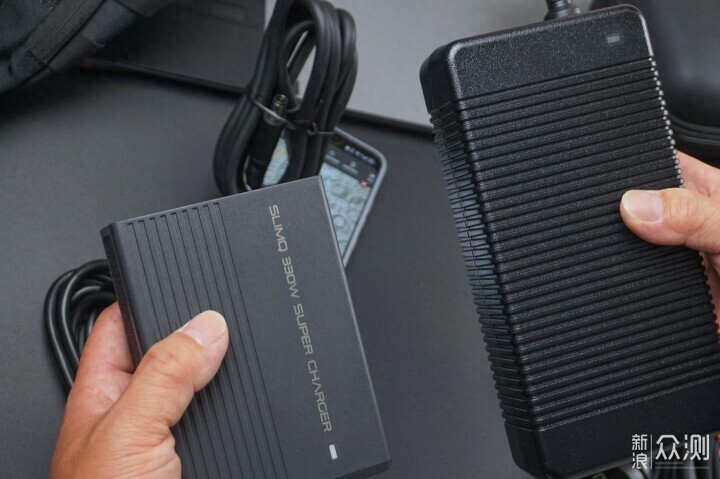
Gaming laptops require a lot of input power, and 240W simply can’t meet the demand. Many manufacturers ship their chargers with a standard 330W, weighing around 1600 grams. Carrying it every day is very heavy, and the size is large, making storage inconvenient. Additionally, this original charger can only charge the laptop, so you still need to carry another charger for your phone and other devices, which is really annoying. SlimQ offers a new solution with the F330W GaN charger.
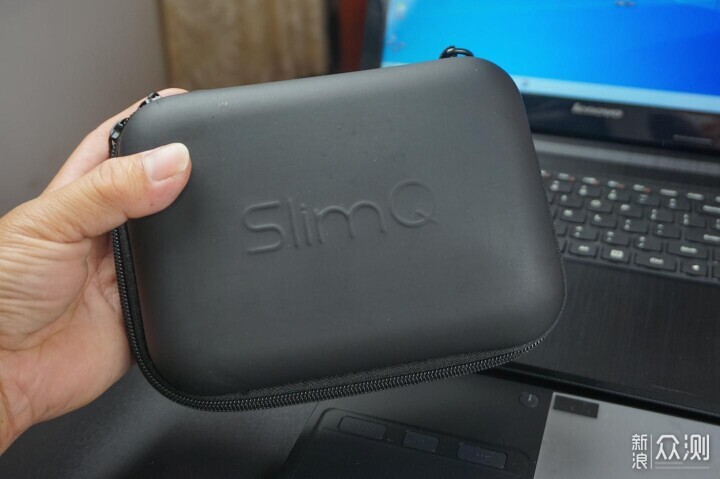
The manufacturer has equipped this charger with a carrying case for easy storage. The black case is well-formed and sturdy, with the SlimQ brand logo prominently displayed on the front.
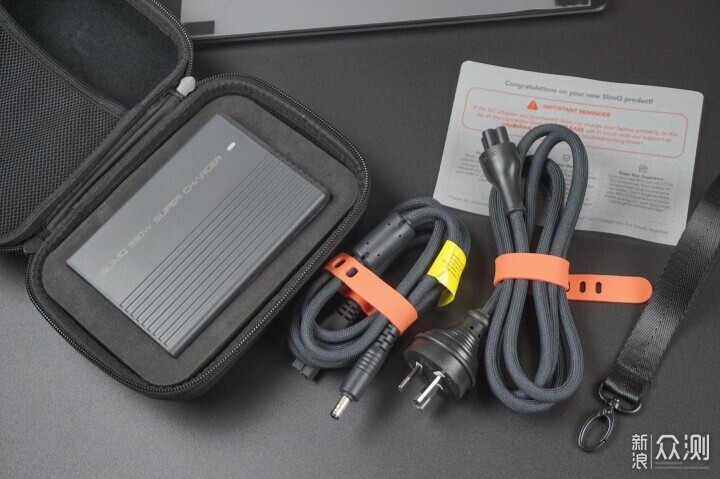
Inside the case, the charger package includes the charger itself, AC cable, DC cable, hand strap, and product manual.
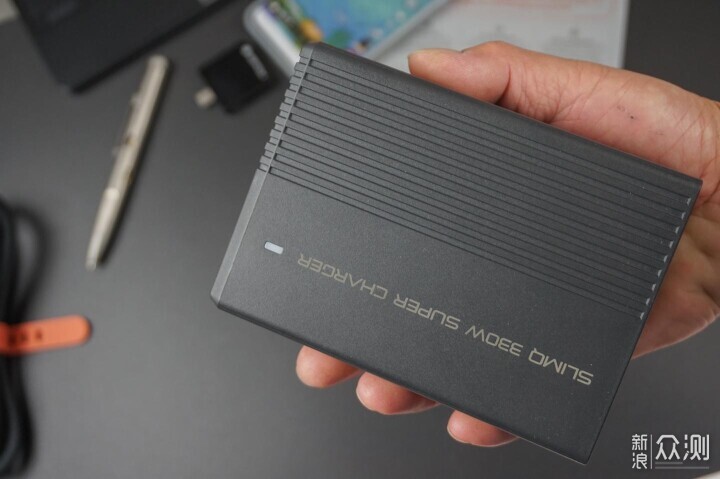
The SlimQ F330W charger looks great, with a sleek design and a matte finish on the surface, making it less prone to fingerprints. The long, horizontal cooling vents feature a power indicator light, and the SlimQ F330W logo makes it easy for users to identify the product.
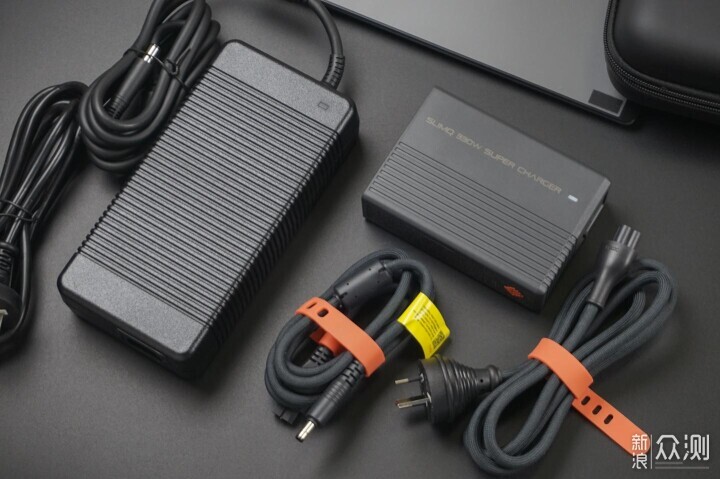
The advantage of a GaN charger is its small size and light weight, which is a huge difference compared to traditional 330W chargers.
Does the GaN charger have no downsides? Obviously not. The downside of GaN is its higher price, especially for high-power chargers.
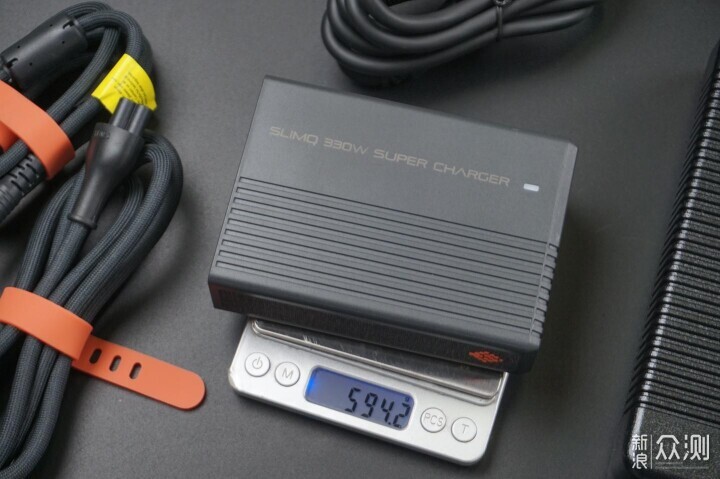
The total weight of the charger is about 594g, which is quite impressive for a 330W GaN charger. It’s definitely in the top tier for weight control.
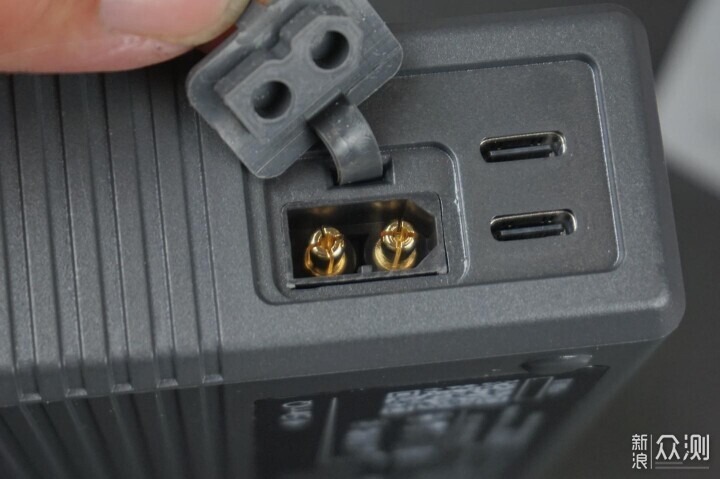
On the output side, the SlimQ F330W features an XT60 connector, with a DC output of 20V16.5A, and the port is equipped with a dustproof cap for safety when not in use.
It also has dual Type-C ports, each capable of delivering up to 100W, making it possible to charge two high-power devices simultaneously.
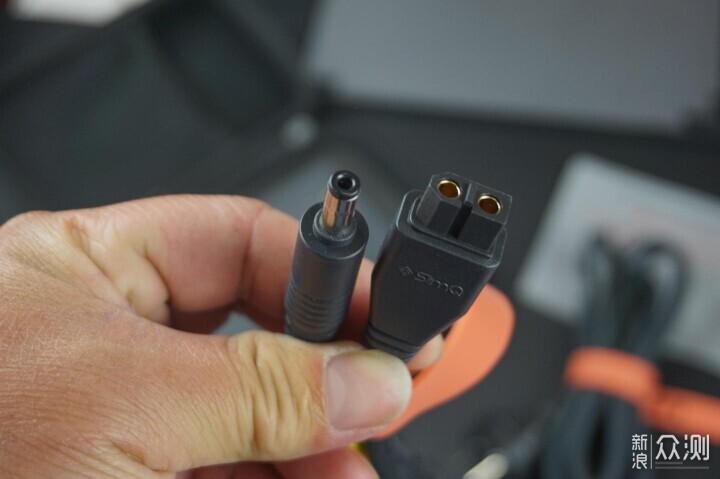
The DC output uses an XT60 to 5.5*2.5mm round connector, supporting up to 16.5A current.
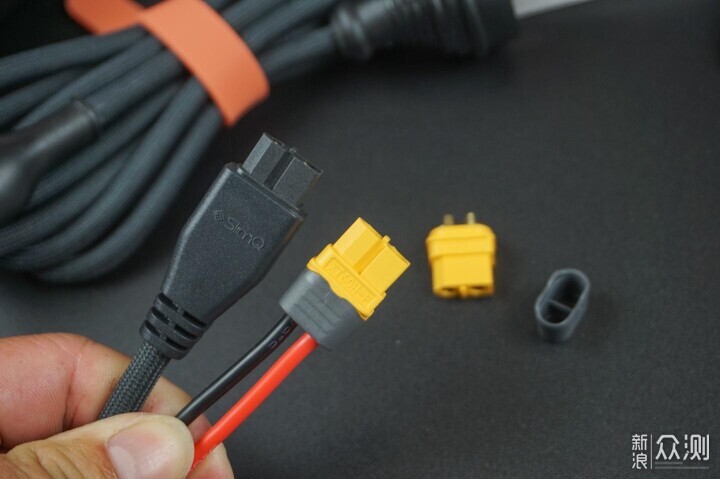
XT60 is the most common connector used by lithium battery enthusiasts, known for its small size and ability to handle high currents up to 30A. The included cables are very thick, with a 5.5mm diameter, offering excellent flexibility and a solid feel. This large current capacity is essential for high-power applications.
DIY uses 14 gauge wires, and the test shows that it can easily handle up to 16.5A of output.
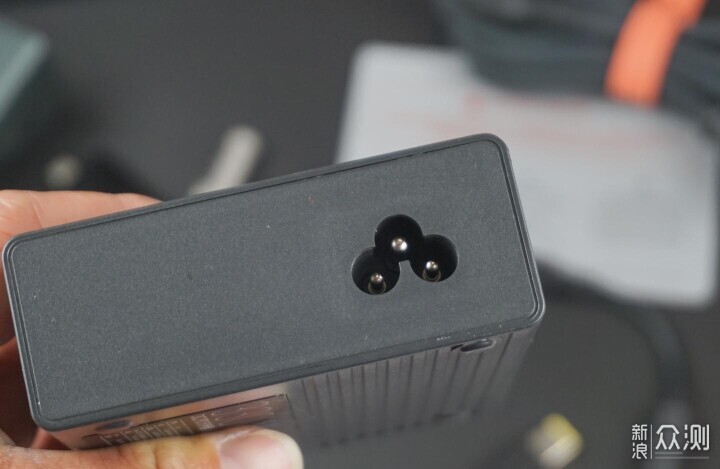
The AC input end uses a C6 three-prong plug with a ground wire, reducing the risk of electrical shock in humid conditions, making it safer to use.
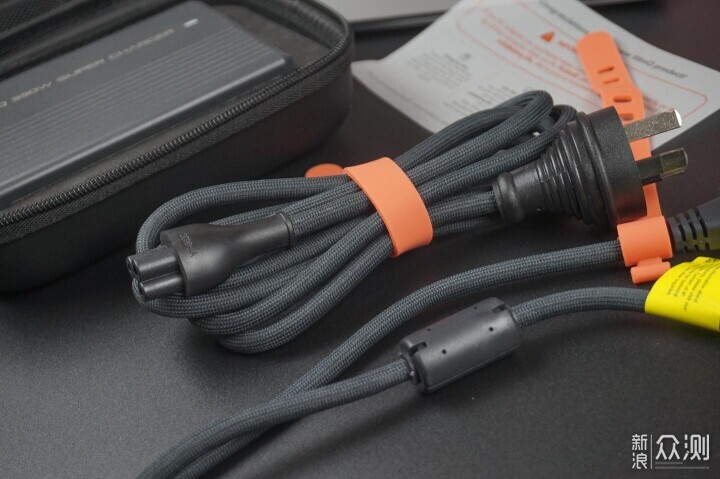
The input and output cables are about 150 cm long, which is sufficient for daily use.
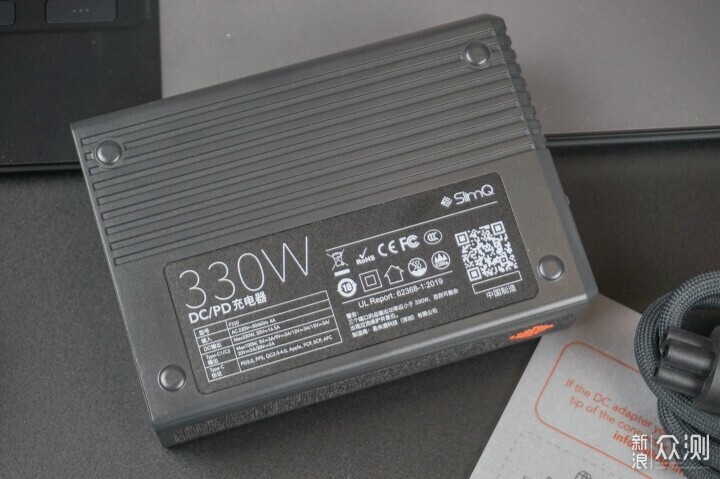
The back of the SlimQ F330W charger features the model number and specifications: Input: 100-240V ~ 50/60Hz 5A; Output: DC: 330W Max, 20V16.5A; Type-C1/C2: 100W Max; Supported protocols: PD3.0, PPS, QC2.0-4.0, Apple, FCP, SCP, AFC; Certified with CCC, etc.
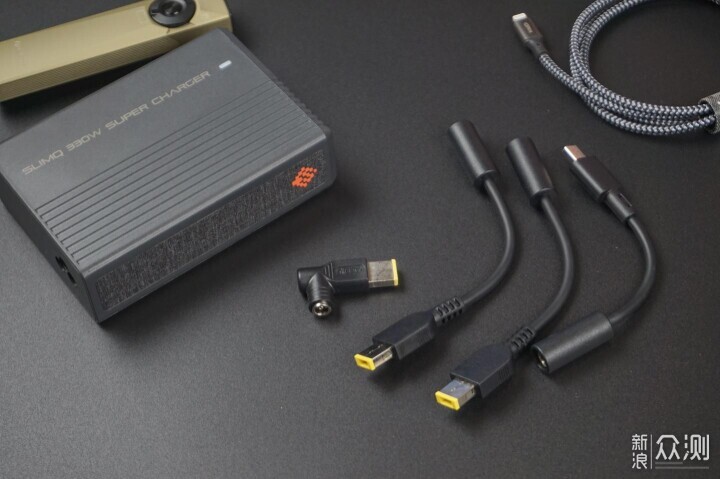
The manufacturer offers dozens of custom adapters for different gaming laptops. When purchasing the charger, users should contact customer service and specify their laptop model. The SlimQ F330W supports gaming laptops from HP, Dell, Acer, Sony, Alienware, etc., so compatibility with mainstream devices is not a concern.
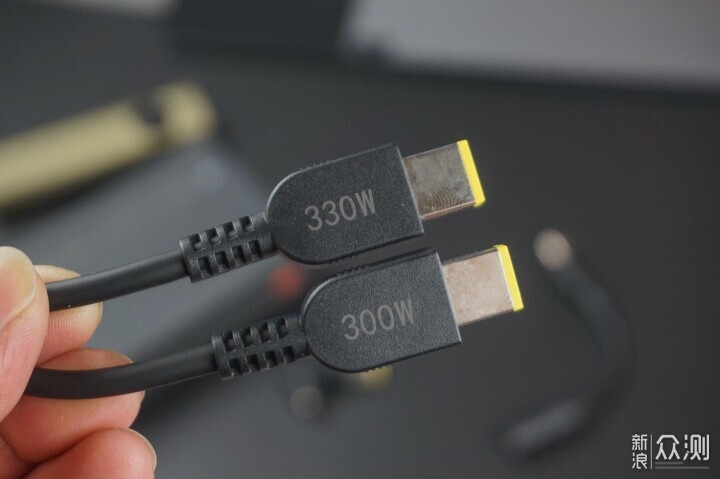
For Lenovo gaming laptops with square charging ports, there are adapters available for 240W, 300W, and 330W. The power output is compatible from high to low, but not the other way around, so users should select the correct adapter based on their laptop model.
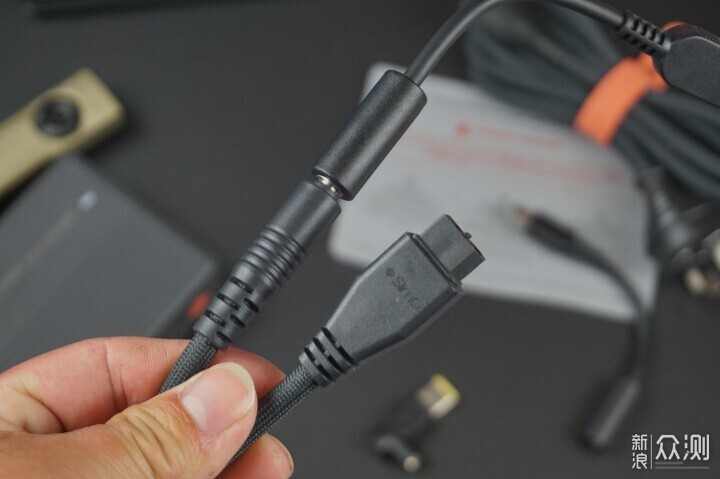
The adapter cable connects to a DC5525 port, and switching between different adapters is quite easy.
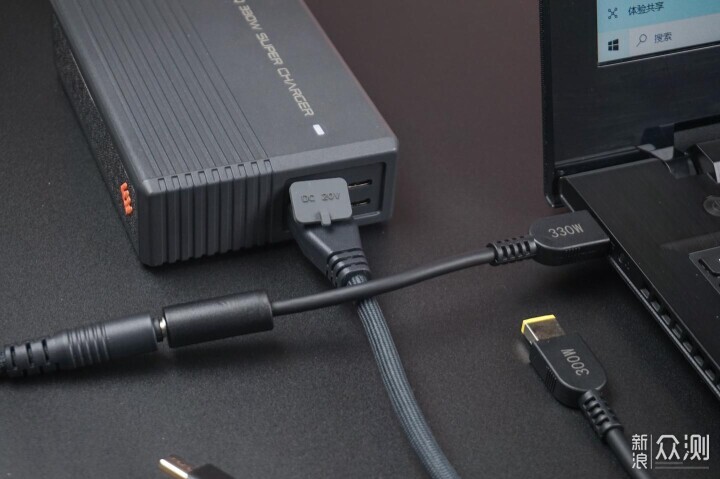
For example, using the Lenovo square connector, you can directly power the laptop through the XT60 connector.
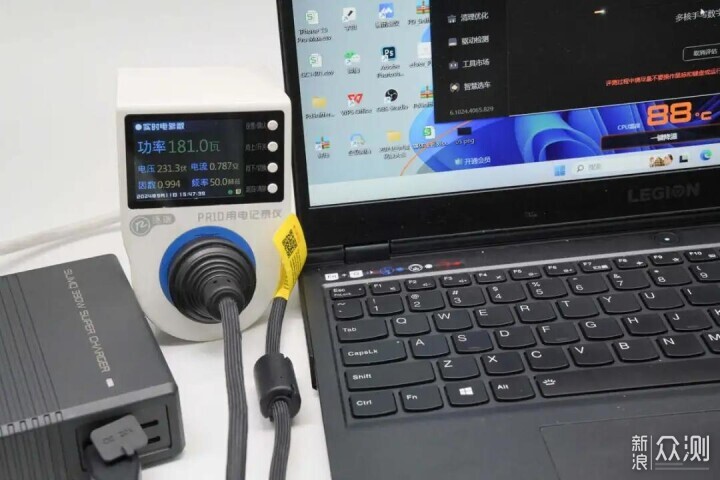
The XT60 output supports a maximum of 330W, making it suitable for charging high-power gaming laptops. The SlimQ F330W charger powers the Lenovo Y7000P through the adapter, showing around 181W of power, which is crucial for high-performance gaming laptops.
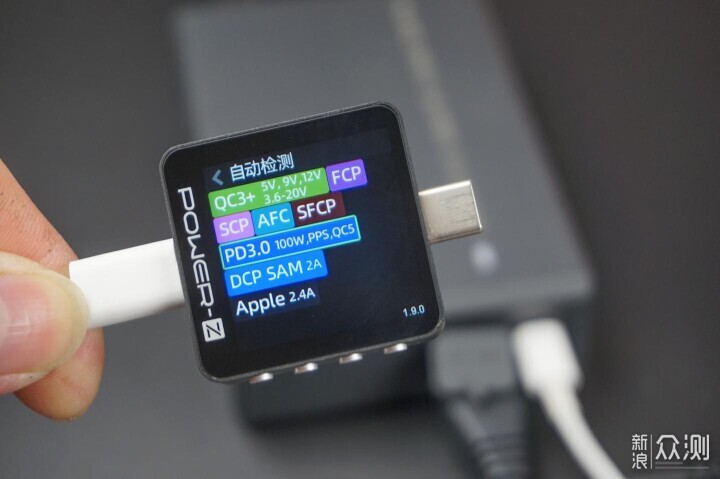
Testing with the POWER-Z KM003C protocol analyzer shows compatibility with QC3+, FCP, SCP, AFC, SFCP, PD3.0, PPS, QC5, DCP, SAM 2A, and Apple 2.4A charging protocols.
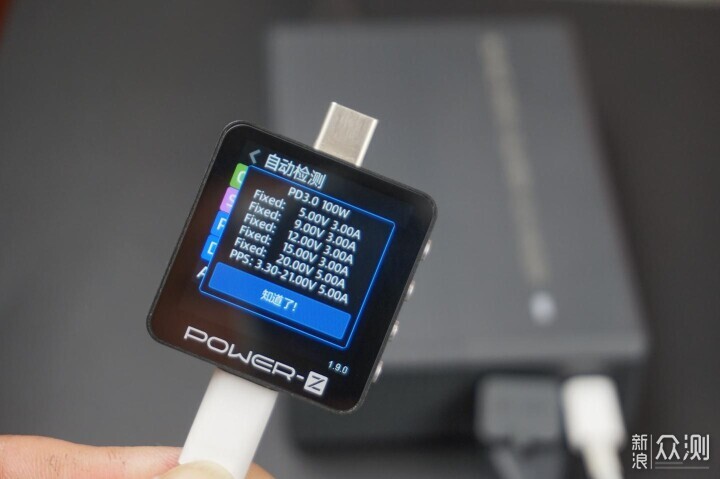
The PD message indicates that C1 and C2 support 5V3A, 9V3A, 12V3A, 15V3A, 20V5A, and a 3.3-21V5A PPS voltage range.
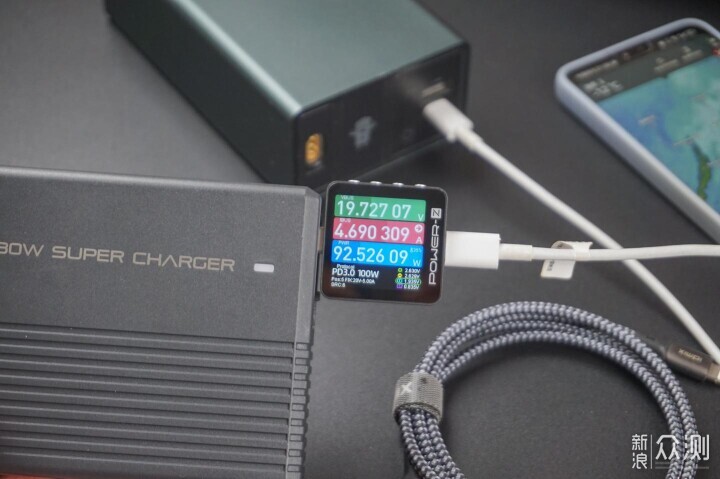
Using a Type-C port to charge a high-power power bank, the POWER-Z KM003C displays an input power of 92.5W, which is close to full-speed charging.
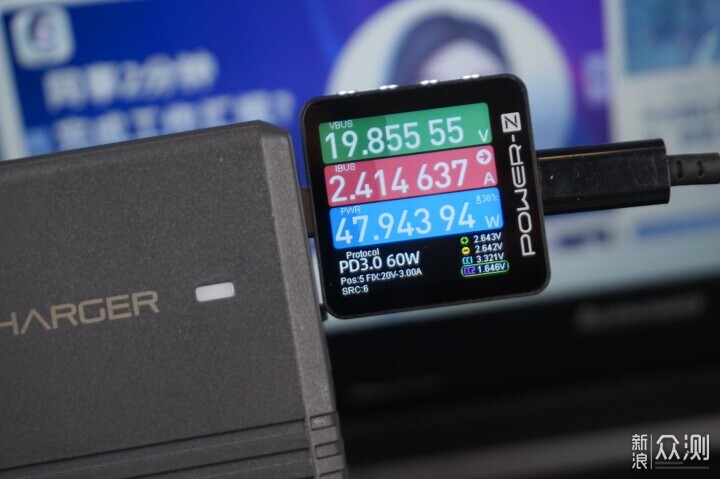
Using the Type-C to Lenovo square connector cable to power the laptop, the input power shows 48W, peaking around 56W, which is enough for regular office tasks without running out of power.
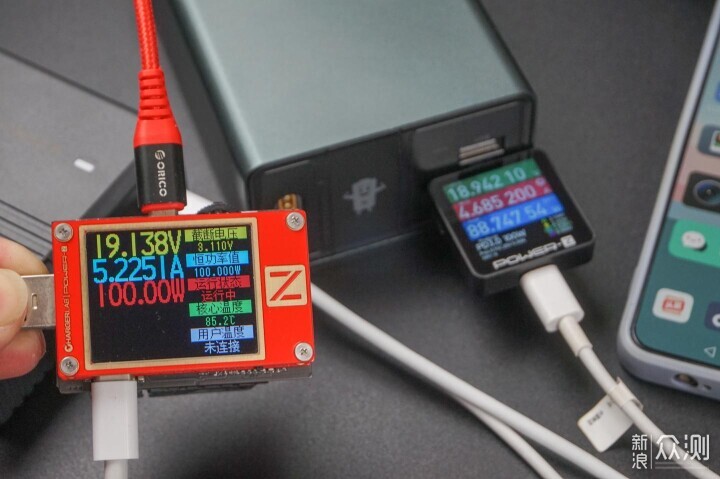
When both Type-C ports are used simultaneously, the output approaches 200W, and there is no indication of overselling. You can confidently charge two high-power devices at the same time without worrying about power issues.
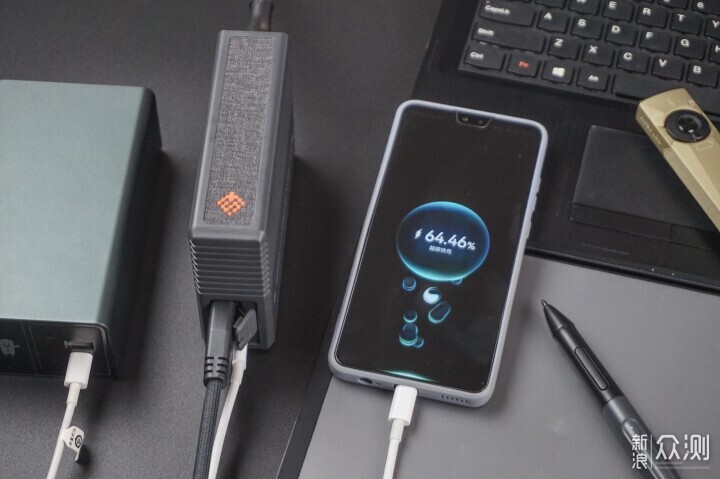
For a three-port output, one Type-C port supports Huawei's super-fast charging, while the other reaches 100W output, and the DC port powers the laptop, demonstrating the SlimQ F330W charger’s ability to efficiently handle high-power outputs.
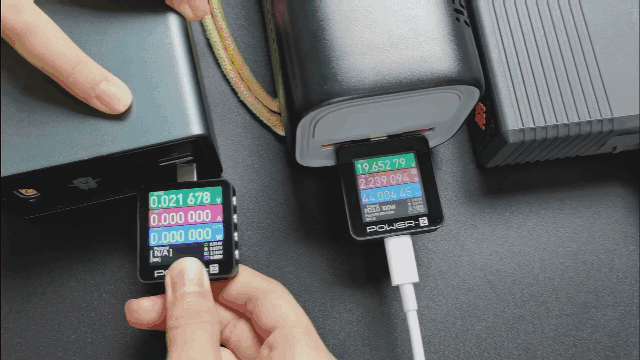
An interesting feature of the SlimQ F330W is that when you plug and unplug cables, they don’t interfere with each other. This is a nice improvement over past chargers that often had trouble with repeated device recognition.
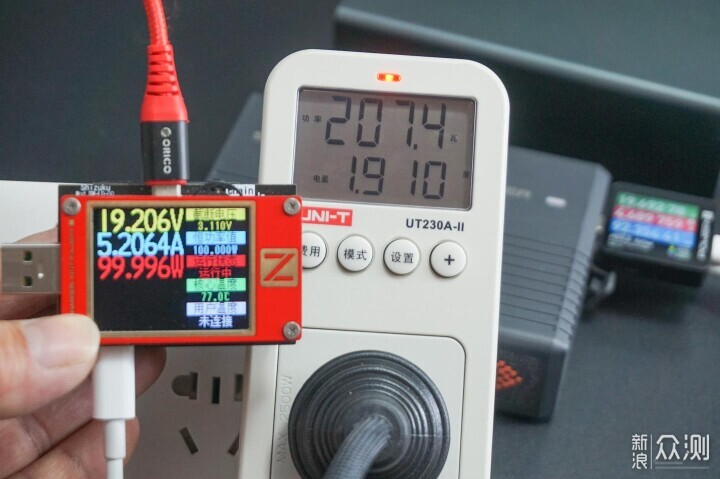
In a 20V output efficiency test, the input power is 207W, and the output power is 192W, with a conversion efficiency of 92.7%.
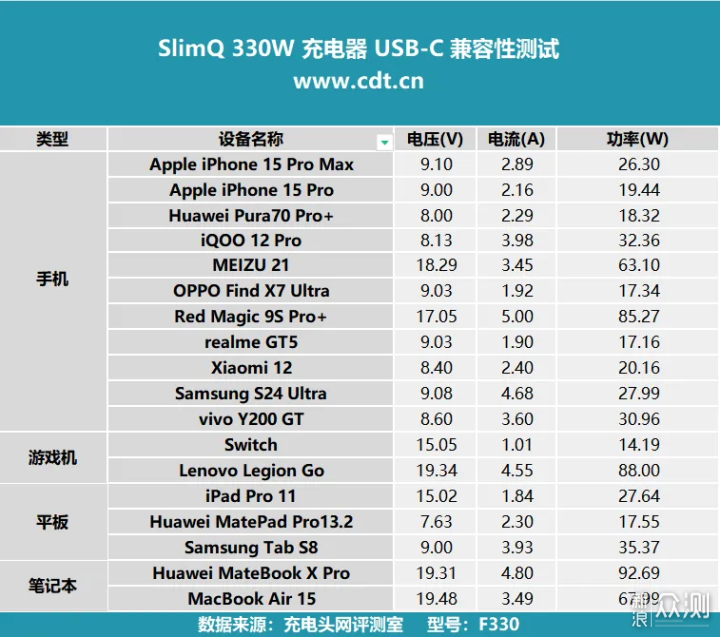
For the Type-C port's compatibility test.
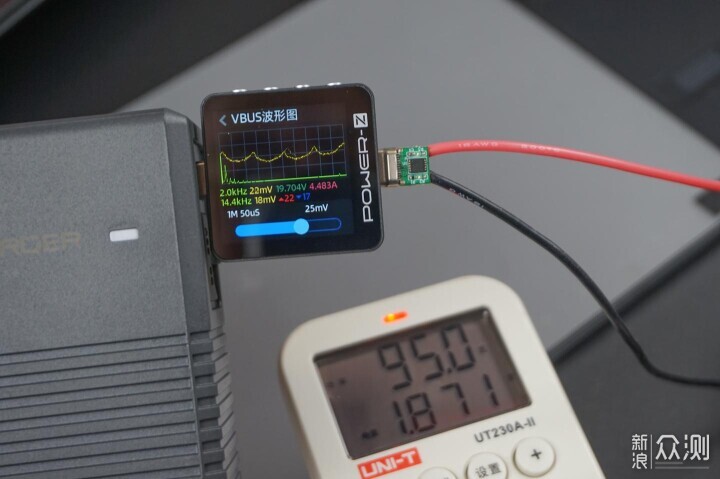
It delivers about 100W, with a ripple of about 22mV, which is quite good. The conversion efficiency reached 92.9%.
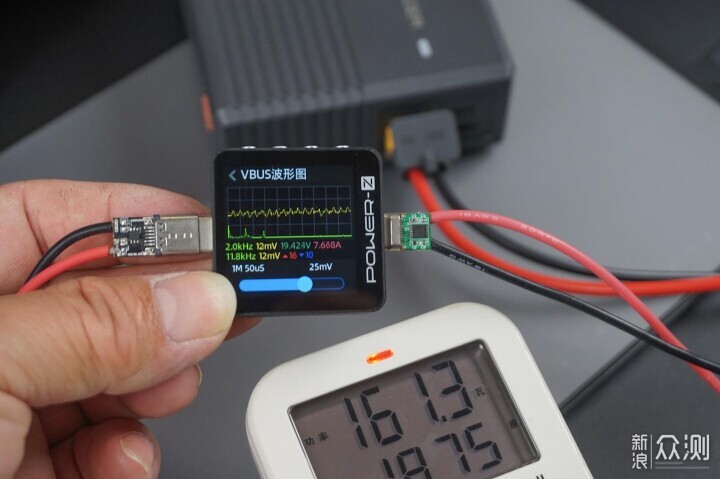
When the DC port outputs 148W, the ripple is around 16mV, which is also impressive. The conversion efficiency stands at 92.4%, though the data was based on a DIY cable, so it’s for reference.
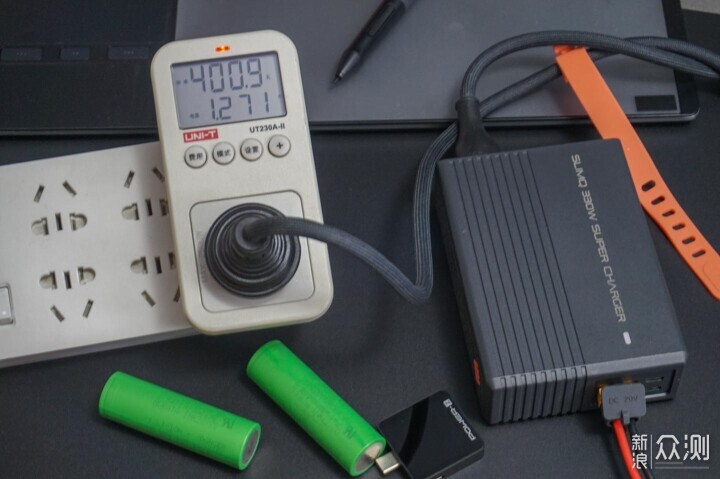
For a maximum DC output power test, the SlimQ F330W charger maintains stability even when the output nears 370W, with input power nearing 400W.
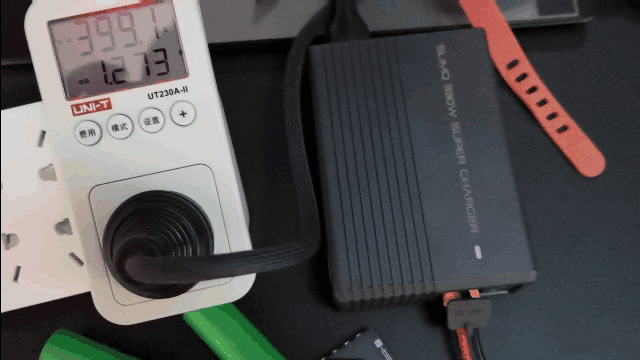
When the total power output is within 330W±10W, the orange light flashes, indicating reduced output to 280W±10W. Once it’s stable at that level, the orange light turns on again, helping users understand the current output status.
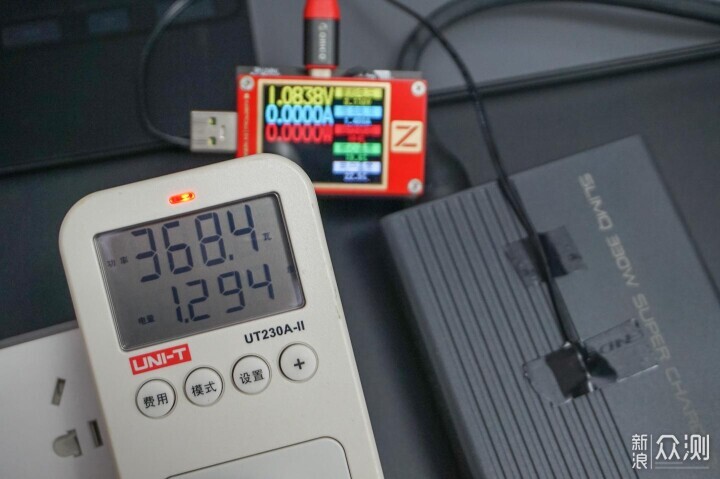
In terms of temperature rise, with an input of 360W and an output of around 330W.
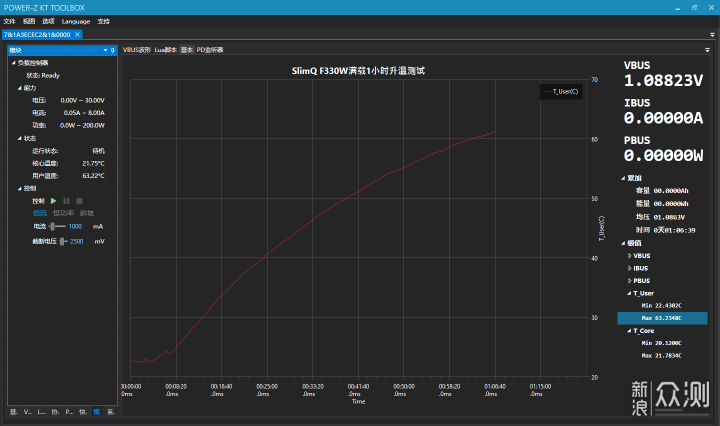
the SlimQ F330W’s exterior reached a maximum of 63°C after one hour of full load, which means the temperature increased by around 43°C. The internal core temperature would definitely exceed 70°C, and it’s expected to rise further in summer’s high temperatures, which is to be expected.
After testing, the charger’s casing felt slightly warm to the touch, but overall the SlimQ F330W charger performed quite well. I’ll conduct an extreme test again next summer in 40°C weather and share the results.
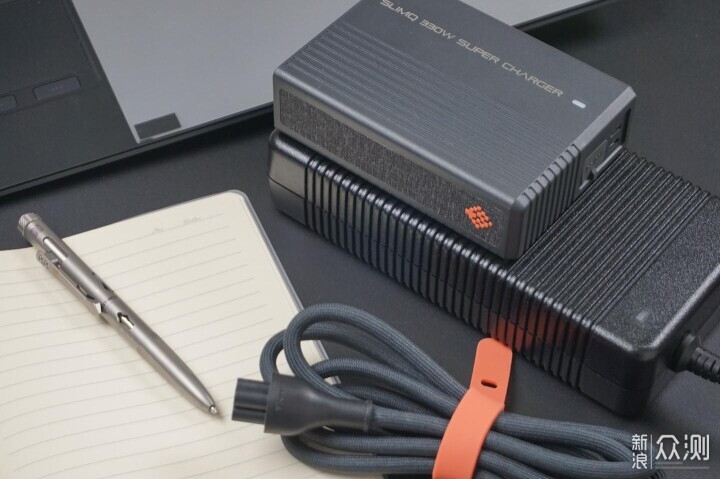
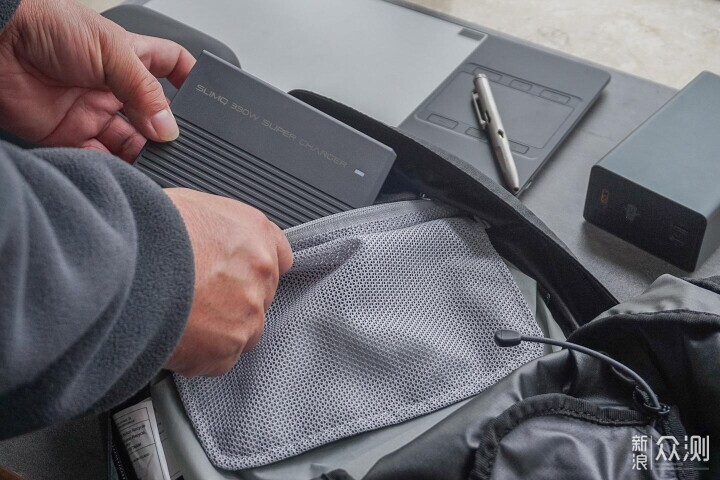
In conclusion, the SlimQ F330W charger leaves a very positive impression, with its small size and stylish look.
For those questioning whether the GaN charger’s size and weight really make a big difference, my personal opinion is that with the charger and cables combined, it’s about 700-800 grams lighter compared to a traditional 330W charger.
The SlimQ F330W is a three-port charger, which effectively acts as a 100W multi-port charger, reducing the weight by about 1000 grams, which is a significant difference.
Overall, the SlimQ F330W charger offers excellent performance, strong output, and broad compatibility, making it an ideal choice for powering high-performance gaming laptops. Its wide array of connection cables makes it compatible with different laptop models, and the XT60 port offers up to 16.5A for DIY users, adding a lot of versatility.
